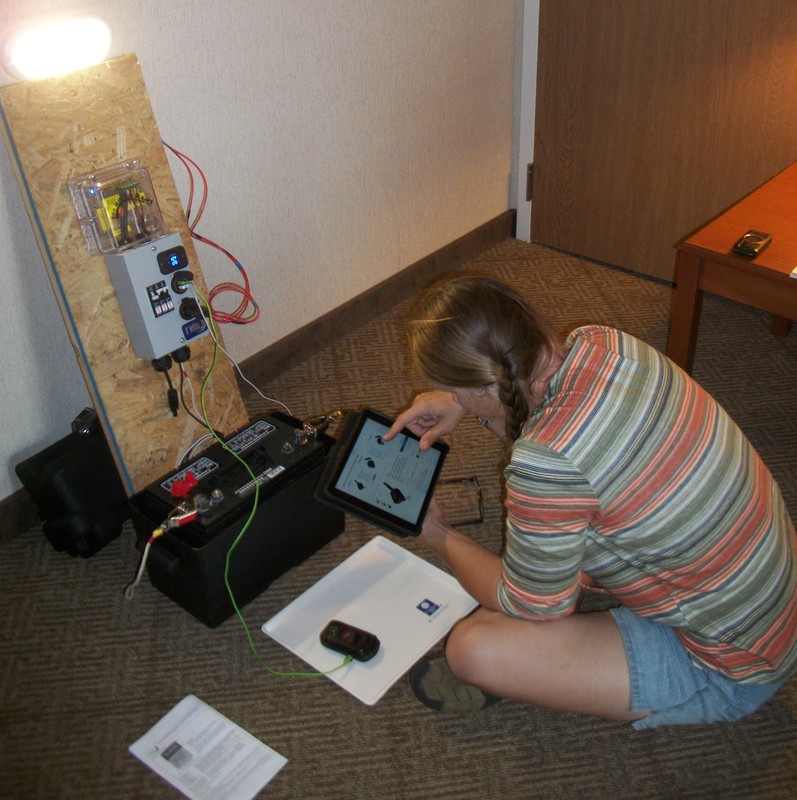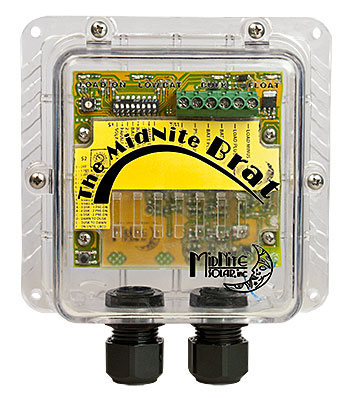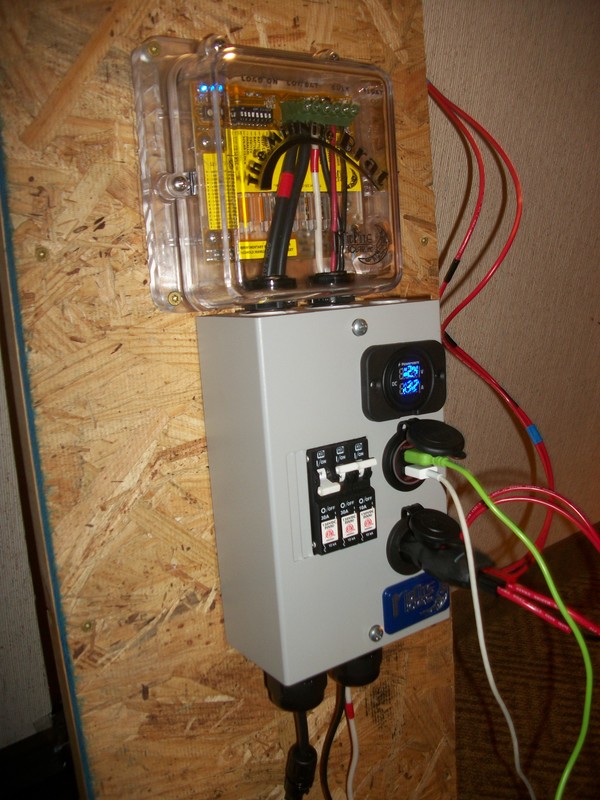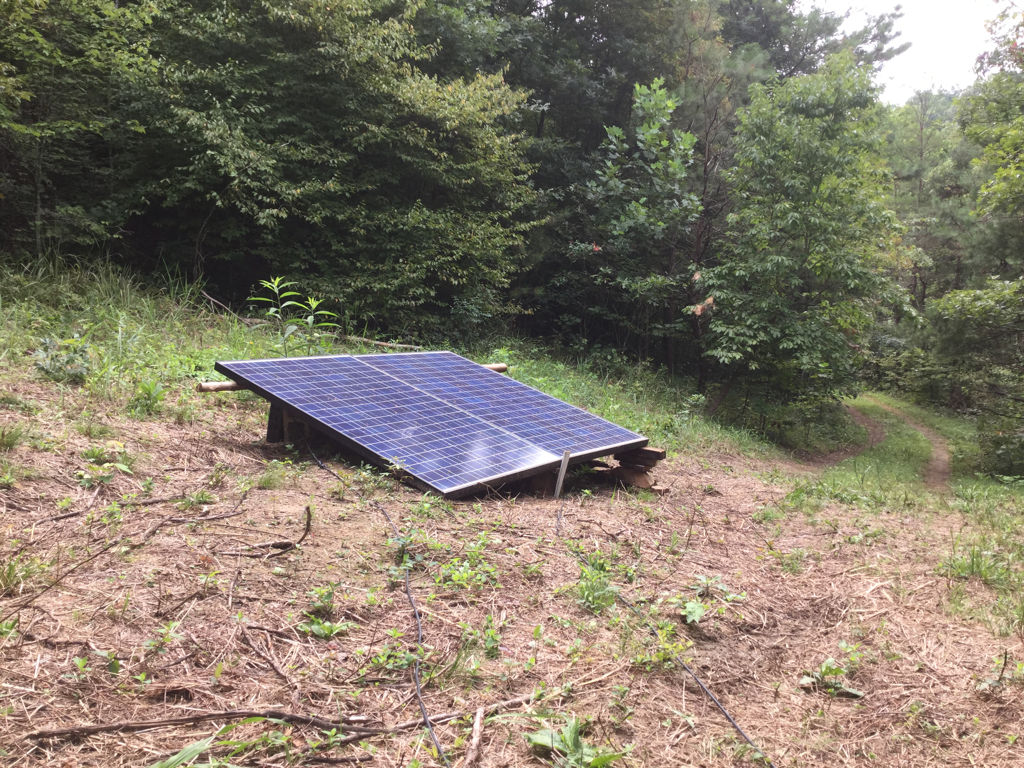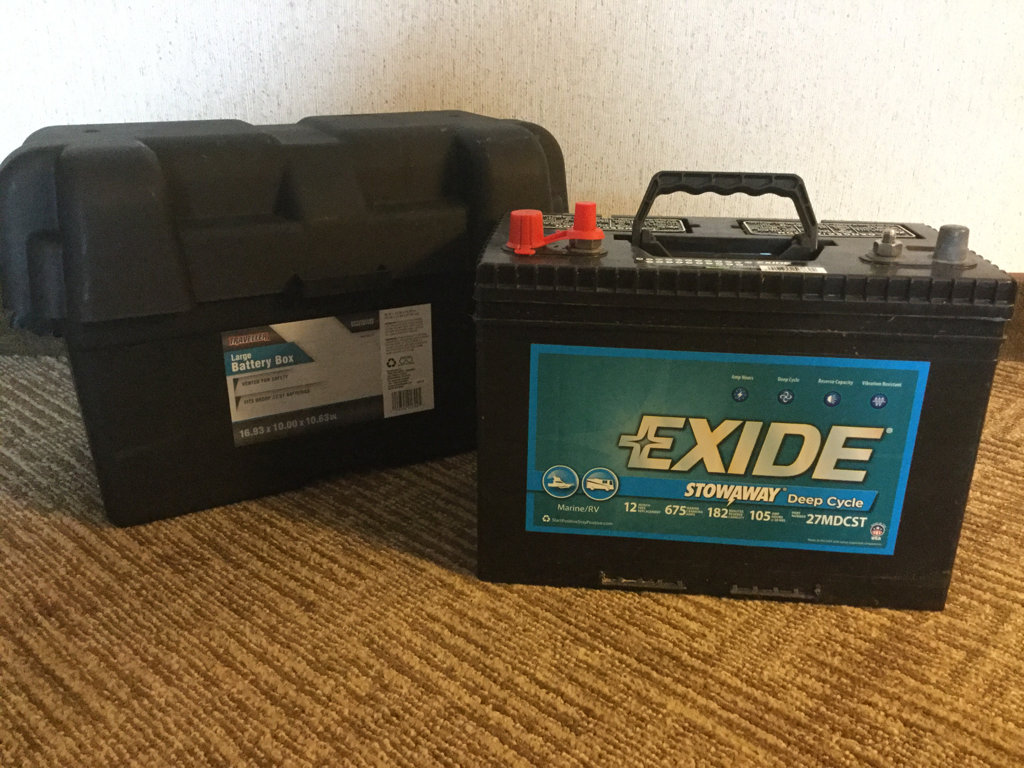|
We were camping in the beautiful hills of Eastern Kentucky (EKY) this past summer when we started assembling a small "plug and play solar system" we could easily transport on our travels. On one of his missions, Marc had developed a 12 Volt system that ran lights for a small hospital in North Sudan (MidNite Solar donated part of the equipment but this is another story). This got him interested in smaller, robust, off-grid systems that anyone could easily use. There are many small RV type plug and play systems available today, but some are either too small to produce the needed power, or they are very high priced for what you get. We wanted a system that we could trust and rely on as well as produce the power needed. We also wanted the final product to be an affordable power producing appliance that was in reach financially to a bigger group of the world’s population.
The Big Baby Box
The Solar Modules
At this writing we are back in The Pine Ridge Forrest of NW Nebraska and are continuing our testing using a different 200W 54 cell module. This time we are just using 1 and with almost full exposure is performing well. The 2 module configuration we used in EKY was used to help capture as much energy we could with the limited exposure at the site (lots of deciduous trees).
2 Comments
12/11/2023 11:15:50 pm
The author's ability to convey complex information in a clear and concise manner made this post an enjoyable read.
Reply
Leave a Reply. |
|
